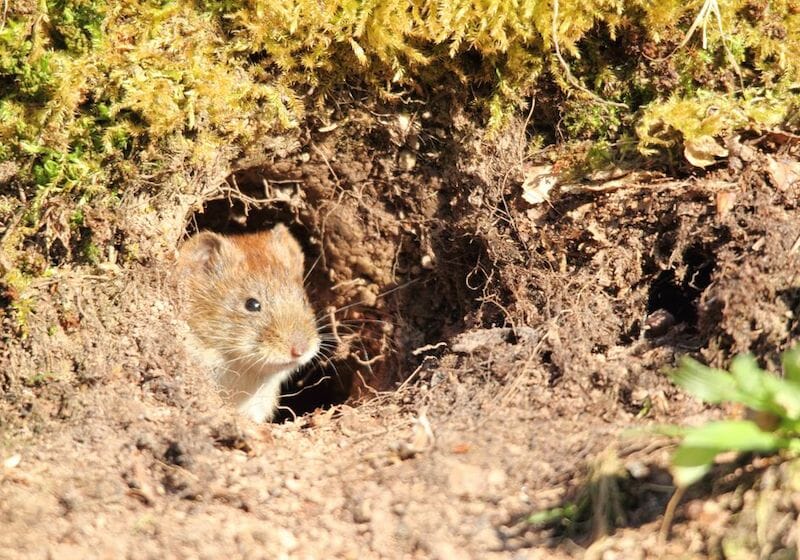Comprehending Vole Lawn Damage and How to Combat It
Comprehensive Guide to Effective Vole Insect Control: Infestation Identification and Therapy Approaches
In the realm of reliable bug control, vole invasions posture a special obstacle that demands a tactical approach. By exploring the subtleties of vole actions, comprehending essential signs of invasion, and evaluating an array of control choices, one can develop a detailed approach to combat these elusive pests.
Understanding Vole Habits
Vole actions is identified by their tunneling routines and quick recreation prices, making them a difficult insect to control successfully. Their fast reproductive rate more makes complex control initiatives, with women capable of generating several trashes in a single year, each containing numerous children.
Recognizing vole habits is crucial for efficient parasite control approaches. By determining their burrow areas, keeping track of feeding locations, and implementing targeted control approaches, such as capturing or habitat adjustment, vole invasions can be managed effectively.
Indicators of Vole Problem

Avoidance Strategies
Carrying out effective prevention methods is critical in reducing vole infestations and securing greenery from their harmful feeding behaviors (vole yard damage). To avoid vole invasions, it is vital to begin by removing possible food resources and sanctuary. Keep turf and greenery trimmed short, eliminate weeds and debris, and preserve a neat garden or yard to make the location less attractive to voles. Setting up barriers such as hardware fabric or underground fencing can also help deter voles from going into details locations. Additionally, reducing excess moisture by dealing with leaky pipes and guaranteeing proper drainage can make the atmosphere much less welcoming for voles.
Regularly checking the residential or commercial property for indicators of vole task, such as runways and tunnel openings, is critical for very early discovery and prompt action. If vole activity is believed, consider making use of repellents or traps strategically placed near their pathways.
Non-Lethal Control Methods
To effectively take care of vole populations while prioritizing humane methods, non-lethal control strategies supply sensible solutions for lowering vole damages in landscapes and gardens. These barriers can be buried at least 12 inches curved and deep at a 90-degree angle to avoid voles from delving below.

Lethal Control Options
One effective technique for attending to vole problems in gardens and landscapes involves the calculated use of deadly control alternatives. When encountered with a serious vole problem that non-lethal methods have fallen short to contain, executing dangerous control actions becomes critical. One generally employed lethal control option is the use of breeze catches. These catches are developed to rapidly and humanely eliminate voles upon activation, making them a prominent selection for numerous gardeners and Learn More landscapers. To increase the performance of breeze traps, it is recommended to position them in areas where vole task is high, such as along paths or near burrow entries. Another deadly control option is the usage of poisonous baits especially formulated to target voles. These lures have poisonous substance that is ingested by the voles, leading to their eventual demise. Care has to be worked out when using harmful lures to avoid injury to non-target pets or pet dogs. In general, when employing lethal control options, it is vital to do so sensibly and in conformity with neighborhood regulations to properly manage vole invasions.
Verdict
To conclude, reliable vole bug control needs a thorough understanding of vole habits, identification of signs of invasion, implementation of avoidance approaches, and use of both deadly and non-lethal control techniques. By combining these approaches, people can successfully manage vole populations and secure their residential property from damages. It is very important to deal with vole infestations quickly to avoid additional issues and reduce the effect on the surrounding setting.
Provided the intricate tunnel systems and rapid recreation rates particular of voles, recognizing the signs of vole invasion comes to be essential in efficient over here pest control. One of the key indicators of vole presence is the presence of surface area paths or tracks in lawn or snow, usually regarding 1-2 inches broad, produced as voles take a trip between their burrows and food resources.To properly manage vole populaces while prioritizing humane techniques, non-lethal control techniques use sensible services for lowering vole damages in gardens and landscapes.One reliable approach for dealing with vole problems in gardens and landscapes includes the calculated usage of dangerous control choices. vole lawn damage.In final thought, efficient vole bug control needs a detailed understanding of vole habits, recognition of signs of invasion, application of prevention approaches, and utilization of both non-lethal and deadly control approaches